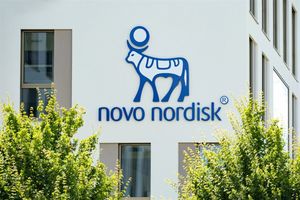– Progression-free survival and objective response rate benefits were observed with combination regimen versus sunitinib regardless of prior nephrectomy status –
Exelixis, Inc. (Nasdaq: EXEL) today announced results demonstrating efficacy benefits regardless of prior nephrectomy status with CABOMETYX® (cabozantinib) in combination with Bristol Myers Squibb’s OPDIVO® (nivolumab) versus sunitinib for patients with previously untreated advanced renal cell carcinoma (RCC). The data, from a post-hoc exploratory analysis of the phase 3 CheckMate -9ER pivotal trial, will be presented as an ePoster available on demand beginning at 8:30 a.m. CEST on Thursday, September 16 during the 2021 European Society of Medical Oncology (ESMO) Congress (abstract 663P).
“Patients with advanced kidney cancer who do not have a prior nephrectomy typically face an even worse prognosis than those who undergo the surgery,” said Camillo Porta, M.D., Full Professor of Medical Oncology at the A. Moro University of Bari, Italy, and presenting author. “It’s critical to gather more data such as this to help us better understand whether recent treatment advancements improve outcomes specifically for these patients. The consistent efficacy benefits demonstrated in the CheckMate -9ER trial regardless of prior nephrectomy status are reassuring as they continue to support the use of CABOMETYX in combination with OPDIVO for a broad range of patients with advanced kidney cancer.”
As previously announced, the phase 3 CheckMate -9ER pivotal trial showed that CABOMETYX in combination with OPDIVO improved overall survival (OS) and doubled median progression-free survival (PFS) and objective response rate (ORR) versus sunitinib in patients with previously untreated advanced RCC. In this new exploratory analysis presented at ESMO 2021, at a median follow-up of 23.5 months, PFS and ORR benefits were observed regardless of prior nephrectomy status. The magnitudes of PFS and ORR benefits associated with CABOMETYX in combination with OPDIVO were greater in the subgroup of patients with prior nephrectomy versus those without prior nephrectomy. See table below for additional details.
“Building on prior subgroup analyses from CheckMate -9ER, we’re pleased to offer physicians these additional data that provide more insights into how the combination regimen may benefit specific subsets of patients with advanced kidney cancer,” said Michael M. Morrissey, Ph.D., President and Chief Executive Officer, Exelixis. “Kidney cancer patients who do not have a prior nephrectomy are an especially difficult-to-treat subset of the patient community that is underserved and faces a particularly poor prognosis. We’re encouraged that these findings show that CABOMETYX in combination with OPDIVO is a valuable first-line treatment option that improves outcomes for these patients.”
Table
Outcome* |
Prior nephrectomy |
No prior nephrectomy |
||
C+N** n=222 |
SUN*** n=233 |
C+N n=101 |
SUN n=95 |
|
Median PFS per BICRa (95% CIb), months |
19.4
|
8.9
|
11.3
|
7.0
|
PFS HRc (95% CI) |
0.50 (0.39-0.64) |
0.62 (0.43-0.89) |
||
Median OS (95% CI), months |
NRd
|
NR
|
23.8
|
29.5
|
OS HR (95% CI) |
0.54 (0.37-0.78) |
0.87 (0.57-1.35) |
||
ORR per BICR
|
60.8
|
30.5
|
41.6
|
23.2
|
Complete response
|
11.3 |
6.0 |
5.0 |
0.0 |
Duration of response per BICR (95% CI), months |
22.0
|
13.8
|
17.2
|
9.9
|
* Data based on minimum follow-up of 16 months (median 23.5 months) for OS in ITT patients, acknowledging censoring at later timepoints. ** C+N: CABOMETYX in combination with OPDIVO *** SUN: sunitinib a Blinded independent central review b Confidence interval c Hazard ratio d Not reached e Not estimable |
||||
In CheckMate -9ER, CABOMETYX in combination with OPDIVO was generally well tolerated and reflected the known safety profiles of the tyrosine kinase inhibitor and immunotherapy components in previously untreated advanced RCC. The most common adverse reactions reported in at least 20% of patients treated with CABOMETYX in combination with OPDIVO were diarrhea, fatigue, hepatotoxicity, palmar-plantar erythrodysesthesia, stomatitis, rash, hypertension, hypothyroidism, musculoskeletal pain, decreased appetite, nausea, dysgeusia, abdominal pain, cough and upper respiratory tract infection. A safety analysis with extended follow-up reported at the 2021 American Society of Clinical Oncology’s Genitourinary Cancers Symposium identified no new safety signals; among patients treated with OPDIVO and CABOMETYX, 6.6% discontinued both agents due to treatment-related adverse events, 9.7% discontinued OPDIVO only and 7.2% discontinued CABOMETYX only.
About CheckMate -9ER
CheckMate -9ER is an open-label, randomized (1:1), multi-national phase 3 trial evaluating patients with previously untreated advanced or metastatic RCC with a clear cell component. A total of 651 patients (22% favorable risk, 58% intermediate risk, 20% poor risk; 25% PD-L1 ≥1%) were randomized to CABOMETYX at a dose of 40 mg once-daily and OPDIVO (n=323) versus sunitinib (n=328). The primary endpoint is PFS; secondary endpoints include OS and ORR. The primary efficacy analysis compares the doublet combination regimen of CABOMETYX and OPDIVO versus sunitinib in all randomized patients. The trial is sponsored by Bristol Myers Squibb and Ono Pharmaceutical Co. and co-funded by Exelixis, Ipsen and Takeda Pharmaceutical Company Limited.
About RCC
The American Cancer Society’s 2021 statistics cite kidney cancer as among the top ten most commonly diagnosed forms of cancer among both men and women in the U.S.1 Clear cell RCC is the most common form of kidney cancer in adults.2 If detected in its early stages, the five-year survival rate for RCC is high; for patients with advanced or late-stage metastatic RCC, however, the five-year survival rate is only 13%.1 Approximately 32,000 patients in the U.S. and 71,000 worldwide will require systemic treatment for advanced kidney cancer in 2021.3
About 70% of RCC cases are known as “clear cell” carcinomas, based on histology.4 The majority of clear cell RCC tumors have below-normal levels of a protein called von Hippel-Lindau, which leads to higher levels of MET, AXL and VEGF.5,6 These proteins promote tumor angiogenesis (blood vessel growth), growth, invasiveness and metastasis.7,8,9,10 MET and AXL may provide escape pathways that drive resistance to VEGF receptor inhibitors.6,7
About CABOMETYX® (cabozantinib)
In the U.S., CABOMETYX tablets are approved for the treatment of patients with advanced RCC; for the treatment of patients with hepatocellular carcinoma who have been previously treated with sorafenib; and for patients with advanced RCC as a first-line treatment in combination with nivolumab. CABOMETYX tablets have also received regulatory approvals in the European Union and additional countries and regions worldwide. In 2016, Exelixis granted Ipsen exclusive rights for the commercialization and further clinical development of cabozantinib outside of the U.S. and Japan. In 2017, Exelixis granted exclusive rights to Takeda Pharmaceutical Company Limited for the commercialization and further clinical development of cabozantinib for all future indications in Japan. Exelixis holds the exclusive rights to develop and commercialize cabozantinib in the U.S.
IMPORTANT SAFETY INFORMATION
WARNINGS AND PRECAUTIONS
Hemorrhage: Severe and fatal hemorrhages occurred with CABOMETYX. The incidence of Grade 3 to 5 hemorrhagic events was 5% in CABOMETYX patients in RCC and HCC studies. Discontinue CABOMETYX for Grade 3 or 4 hemorrhage. Do not administer CABOMETYX to patients who have a recent history of hemorrhage, including hemoptysis, hematemesis, or melena.
Perforations and Fistulas: Fistulas, including fatal cases, occurred in 1% of CABOMETYX patients. Gastrointestinal (GI) perforations, including fatal cases, occurred in 1% of CABOMETYX patients. Monitor patients for signs and symptoms of fistulas and perforations, including abscess and sepsis. Discontinue CABOMETYX in patients who experience a Grade 4 fistula or a GI perforation.
Thrombotic Events: CABOMETYX increased the risk of thrombotic events. Venous thromboembolism occurred in 7% (including 4% pulmonary embolism) and arterial thromboembolism in 2% of CABOMETYX patients. Fatal thrombotic events occurred in CABOMETYX patients. Discontinue CABOMETYX in patients who develop an acute myocardial infarction or serious arterial or venous thromboembolic events that require medical intervention.
Hypertension and Hypertensive Crisis: CABOMETYX can cause hypertension, including hypertensive crisis. Hypertension was reported in 36% (17% Grade 3 and <1% Grade 4) of CABOMETYX patients. Do not initiate CABOMETYX in patients with uncontrolled hypertension. Monitor blood pressure regularly during CABOMETYX treatment. Withhold CABOMETYX for hypertension that is not adequately controlled with medical management; when controlled, resume at a reduced dose. Discontinue CABOMETYX for severe hypertension that cannot be controlled with anti-hypertensive therapy or for hypertensive crisis.
Diarrhea: Diarrhea occurred in 63% of CABOMETYX patients. Grade 3 diarrhea occurred in 11% of CABOMETYX patients. Withhold CABOMETYX until improvement to Grade 1 and resume at a reduced dose for intolerable Grade 2 diarrhea, Grade 3 diarrhea that cannot be managed with standard antidiarrheal treatments, or Grade 4 diarrhea.
Palmar-Plantar Erythrodysesthesia (PPE): PPE occurred in 44% of CABOMETYX patients. Grade 3 PPE occurred in 13% of CABOMETYX patients. Withhold CABOMETYX until improvement to Grade 1 and resume at a reduced dose for intolerable Grade 2 PPE or Grade 3 PPE.
Hepatotoxicity: CABOMETYX in combination with nivolumab can cause hepatic toxicity with higher frequencies of Grades 3 and 4 ALT and AST elevations compared to CABOMETYX alone.
Monitor liver enzymes before initiation of and periodically throughout treatment. Consider more frequent monitoring of liver enzymes than when the drugs are administered as single agents. For elevated liver enzymes, interrupt CABOMETYX and nivolumab and consider administering corticosteroids.
With the combination of CABOMETYX and nivolumab, Grades 3 and 4 increased ALT or AST were seen in 11% of patients. ALT or AST >3 times ULN (Grade ≥2) was reported in 83 patients, of whom 23 (28%) received systemic corticosteroids; ALT or AST resolved to Grades 0-1 in 74 (89%). Among the 44 patients with Grade ≥2 increased ALT or AST who were rechallenged with either CABOMETYX (n=9) or nivolumab (n=11) as a single agent or with both (n=24), recurrence of Grade ≥2 increased ALT or AST was observed in 2 patients receiving CABOMETYX, 2 patients receiving nivolumab, and 7 patients receiving both CABOMETYX and nivolumab.
Adrenal Insufficiency: CABOMETYX in combination with nivolumab can cause primary or secondary adrenal insufficiency. For Grade 2 or higher adrenal insufficiency, initiate symptomatic treatment, including hormone replacement as clinically indicated. Withhold CABOMETYX and/or nivolumab depending on severity.
Adrenal insufficiency occurred in 4.7% (15/320) of patients with RCC who received CABOMETYX with nivolumab, including Grade 3 (2.2%), and Grade 2 (1.9%) adverse reactions. Adrenal insufficiency led to permanent discontinuation of CABOMETYX and nivolumab in 0.9% and withholding of CABOMETYX and nivolumab in 2.8% of patients with RCC.
Approximately 80% (12/15) of patients with adrenal insufficiency received hormone replacement therapy, including systemic corticosteroids. Adrenal insufficiency resolved in 27% (n=4) of the 15 patients. Of the 9 patients in whom CABOMETYX with nivolumab was withheld for adrenal insufficiency, 6 reinstated treatment after symptom improvement; of these, all (n=6) received hormone replacement therapy and 2 had recurrence of adrenal insufficiency.
Proteinuria: Proteinuria was observed in 7% of CABOMETYX patients. Monitor urine protein regularly during CABOMETYX treatment. Discontinue CABOMETYX in patients who develop nephrotic syndrome.
Osteonecrosis of the Jaw (ONJ): ONJ occurred in <1% of CABOMETYX patients. ONJ can manifest as jaw pain, osteomyelitis, osteitis, bone erosion, tooth or periodontal infection, toothache, gingival ulceration or erosion, persistent jaw pain, or slow healing of the mouth or jaw after dental surgery. Perform an oral examination prior to CABOMETYX initiation and periodically during treatment. Advise patients regarding good oral hygiene practices. Withhold CABOMETYX for at least 3 weeks prior to scheduled dental surgery or invasive dental procedures, if possible. Withhold CABOMETYX for development of ONJ until complete resolution.
Impaired Wound Healing: Wound complications occurred with CABOMETYX. Withhold CABOMETYX for at least 3 weeks prior to elective surgery. Do not administer CABOMETYX for at least 2 weeks after major surgery and until adequate wound healing is observed. The safety of resumption of CABOMETYX after resolution of wound healing complications has not been established.
Reversible Posterior Leukoencephalopathy Syndrome (RPLS): RPLS, a syndrome of subcortical vasogenic edema diagnosed by characteristic findings on MRI, can occur with CABOMETYX. Evaluate for RPLS in patients presenting with seizures, headache, visual disturbances, confusion, or altered mental function. Discontinue CABOMETYX in patients who develop RPLS.
Embryo-Fetal Toxicity: CABOMETYX can cause fetal harm. Advise pregnant women and females of reproductive potential of the potential risk to a fetus. Verify the pregnancy status of females of reproductive potential prior to initiating CABOMETYX and advise them to use effective contraception during treatment and for 4 months after the last dose.
ADVERSE REACTIONS
The most common (≥20%) adverse reactions are:
CABOMETYX as a single agent: diarrhea, fatigue, decreased appetite, PPE, nausea, hypertension, vomiting, weight decreased, constipation, and dysphonia.
CABOMETYX in combination with nivolumab: diarrhea, fatigue, hepatotoxicity, PPE, stomatitis, rash, hypertension, hypothyroidism, musculoskeletal pain, decreased appetite, nausea, dysgeusia, abdominal pain, cough, and upper respiratory tract infection.
DRUG INTERACTIONS
Strong CYP3A4 Inhibitors: If coadministration with strong CYP3A4 inhibitors cannot be avoided, reduce the CABOMETYX dosage. Avoid grapefruit or grapefruit juice.
Strong CYP3A4 Inducers: If coadministration with strong CYP3A4 inducers cannot be avoided, increase the CABOMETYX dosage. Avoid St. John’s wort.
USE IN SPECIFIC POPULATIONS
Lactation: Advise women not to breastfeed during CABOMETYX treatment and for 4 months after the final dose.
Hepatic Impairment: In patients with moderate hepatic impairment, reduce the CABOMETYX dosage. Avoid CABOMETYX in patients with severe hepatic impairment.
Please see accompanying full Prescribing Information https://www.cabometyx.com/downloads/CABOMETYXUSPI.pdf.
You are encouraged to report negative side effects of prescription drugs to the FDA. Visit www.FDA.gov/medwatch or call 1-800-FDA-1088.
About Exelixis
Founded in 1994, Exelixis, Inc. (NASDAQ: EXEL) is a commercially successful, oncology-focused biotechnology company that strives to accelerate the discovery, development and commercialization of new medicines for difficult-to-treat cancers. Following early work in model system genetics, we established a broad drug discovery and development platform that has served as the foundation for our continued efforts to bring new cancer therapies to patients in need. Our discovery efforts have resulted in four commercially available products, CABOMETYX® (cabozantinib), COMETRIQ® (cabozantinib), COTELLIC® (cobimetinib) and MINNEBRO® (esaxerenone), and we have entered into partnerships with leading pharmaceutical companies to bring these important medicines to patients worldwide. Supported by revenues from our marketed products and collaborations, we are committed to prudently reinvesting in our business to maximize the potential of our pipeline. We are supplementing our existing therapeutic assets with targeted business development activities and internal drug discovery — all to deliver the next generation of Exelixis medicines and help patients recover stronger and live longer. Exelixis is a member of the Standard & Poor’s (S&P) MidCap 400 index, which measures the performance of profitable mid-sized companies. In November 2020, the company was named to Fortune’s 100 Fastest-Growing Companies list for the first time, ranking 17th overall and the third-highest biopharmaceutical company. For more information about Exelixis, please visit www.exelixis.com, follow @ExelixisInc on Twitter or like Exelixis, Inc. on Facebook.
Forward-Looking Statements
This press release contains forward-looking statements, including, without limitation, statements related to: the presentation of data from the phase 3 CheckMate -9ER trial at ESMO 2021; the therapeutic potential of the combination of CABOMETYX and OPDIVO for a broad range of patients with advanced kidney cancer; and Exelixis’ plans to reinvest in its business to maximize the potential of the company’s pipeline, including through targeted business development activities and internal drug discovery. Any statements that refer to expectations, projections or other characterizations of future events or circumstances are forward-looking statements and are based upon Exelixis’ current plans, assumptions, beliefs, expectations, estimates and projections. Forward-looking statements involve risks and uncertainties. Actual results and the timing of events could differ materially from those anticipated in the forward-looking statements as a result of these risks and uncertainties, which include, without limitation: the availability of data at the referenced times; complexities and the unpredictability of the regulatory review and approval processes in the U.S. and elsewhere; Exelixis’ and BMS’ continuing compliance with applicable legal and regulatory requirements; unexpected concerns that may arise as a result of the occurrence of adverse safety events or additional data analyses of clinical trials evaluating the combination of CABOMETYX and OPDIVO; Exelixis’ dependence on its relationships with its collaboration partners, including their pursuit of regulatory approvals for partnered compounds in new indications and their adherence to their obligations under relevant collaboration agreements; Exelixis’ dependence on third-party vendors for the development, manufacture and supply of cabozantinib; Exelixis’ ability to protect its intellectual property rights; market competition, including the potential for competitors to obtain approval for generic versions of CABOMETYX; changes in economic and business conditions, including as a result of the COVID-19 pandemic; and other factors affecting Exelixis and its development programs discussed under the caption “Risk Factors” in Exelixis’ Quarterly Report on Form 10-Q filed with the Securities and Exchange Commission (SEC) on August 5, 2021, and in Exelixis’ future filings with the SEC. All forward-looking statements in this press release are based on information available to Exelixis as of the date of this press release, and Exelixis undertakes no obligation to update or revise any forward-looking statements contained herein, except as required by law.
Exelixis, the Exelixis logo, CABOMETYX, COMETRIQ and COTELLIC are registered U.S. trademarks of Exelixis. MINNEBRO is a registered trademark of Daiichi Sankyo Company, Limited.
OPDIVO® is a registered trademark of Bristol-Myers Squibb Company.
1 American Cancer Society: Cancer Facts & Figures 2021. Available at: https://www.cancer.org/content/dam/cancer-org/research/cancer-facts-and-statistics/annual-cancer-facts-and-figures/2021/cancer-facts-and-figures-2021.pdf. Accessed September 2021.
2 Jonasch, E., Gao, J., Rathmell, W., Renal cell carcinoma. BMJ. 2014; 349:g4797.
3 Decision Resources Report: Renal Cell Carcinoma. October 2014 (internal data on file).
4 American Cancer Society: What is Kidney Cancer? Available at: https://www.cancer.org/cancer/kidney-cancer/about/what-is-kidney-cancer.html. Accessed September 2021.
5 Harshman, L., and Choueiri, T. Targeting the hepatocyte growth factor/c-Met signaling pathway in renal cell carcinoma. Cancer J. 2013; 19:316-323.
6 Rankin, et al. Direct regulation of GAS6/AXL signaling by HIF promotes renal metastasis through SRC and MET. Proc Natl Acad Sci USA. 2014; 111:13373-13378.
7 Zhou, L., Liu, X-D., Sun, M., et al. Targeting MET and AXL overcomes resistance to sunitinib therapy in renal cell carcinoma. Oncogene. 2016; 35:2687-2697.
8 Koochekpour, et al. The von Hippel-Lindau tumor suppressor gene inhibits hepatocyte growth factor/scatter factor-induced invasion and branching morphogenesis in renal carcinoma cells. Mol Cell Biol. 1999; 19:5902–5912.
9 Takahashi, A., Sasaki, H., Kim, S., et al. Markedly increased amounts of messenger RNAs for vascular endothelial growth factor and placenta growth factor in renal cell carcinoma associated with angiogenesis. Cancer Res. 1994; 54:4233-4237.
10 Nakagawa, M., Emoto, A., Hanada, T., Nasu, N., Nomura, Y. Tubulogenesis by microvascular endothelial cells is mediated by vascular endothelial growth factor (VEGF) in renal cell carcinoma. Br J Urol. 1997; 79:681-687.
View source version on businesswire.com: https://www.businesswire.com/news/home/20210915006158/en/
Contacts
Investors Contact:
Susan Hubbard
EVP, Public Affairs and
Investor Relations
Exelixis, Inc.
(650) 837-8194
shubbard@exelixis.com
Media Contact:
Lindsay Treadway
Executive Director, Public Affairs and Advocacy Relations
Exelixis, Inc.
(650) 837-7522
ltreadway@exelixis.com





